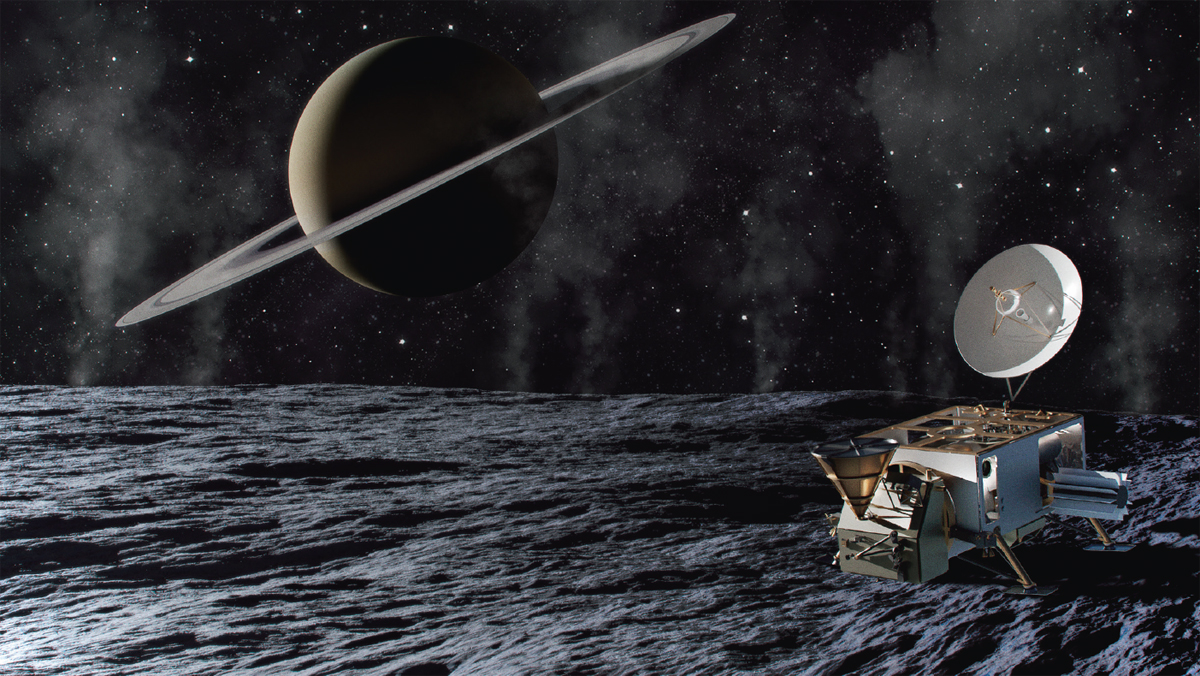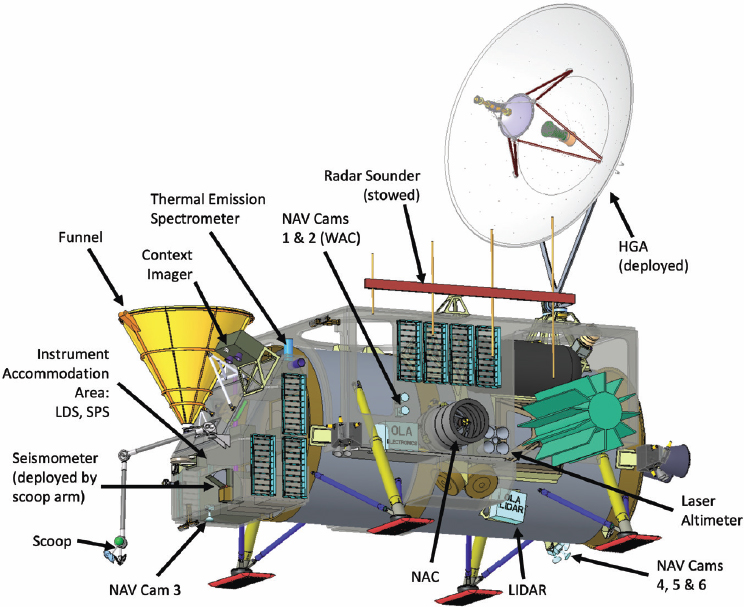
Enceladus Orbilander
The decadal survey recommended that in the latter part of this decade NASA begin work on a large-class mission to explore Enceladus (Figures 28 and 29). Cassini’s observations during its multi-year tour of the saturnian system revealed that Enceladus has an ice-covered surface and a rocky core. Moreover, it is habitable because it possesses significant liquid water beneath its icy surface, energy to sustain metabolic processes, and favorable conditions for the formation of complex organic molecules. Most of this evidence comes from direct analysis of plumes of icy particles and gas erupting from rifts adjacent to the moon’s south polar region (Figure 30).
Analysis of Enceladus’s gravity, topography, and subtle rotational wobble revealed that the plumes emanate from a global subsurface ocean tens of kilometers deep. Analyses made as Cassini flew through the plumes established that their composition is similar to that of newly discovered hydrothermal systems and subsurface fluids on Earth. It is well established that seafloor vents on Earth can synthesize simple organic molecules and support novel microbial metabolic processes. Thus, if geological processes—driven by the dissipation of tidal energy within the moon—can sustain the ocean and hydrothermal activity for long enough, Enceladus may be an abode of life.
The proposed Enceladus Orbilander (orbiter and lander) is designed to study plume materials and determine if there is life beyond Earth and if not, why not? Orbilander will do this by
FIGURE 28 (Above) Artist’s impression of Orbilander on the surface of Enceladus sometime in the 2050s.

collecting and analyzing fresh plume material during a 1.5-year orbital survey of Enceladus and during a 2-year landed mission. Its main science objectives are searching for evidence of life and obtaining the necessary geochemical and geophysical context to interpret the data from the life detection experiments. The latter will use multiple complementary approaches including, for example, the detection of amino acids, lipids, and cell-like structures. Context observations will be conducted using imagers, spectrometers, radar and lidar systems, and a seismometer.
The decadal survey envisaged commencing work on Orbilander in the latter part of this decade. Viable launch opportunities occur in 2037 and 2038 and during the 2040s. A 7- to 9-year cruise to Saturn after launch supports a landing on Enceladus when its south pole is optimally illuminated in the early 2050s.
As with Uranus Orbiter and Probe, opportunities for international cooperation on a mission to Enceladus are good because the European Space Agency has already expressed interest in flying its own ocean world mission in the coming decades. Should budgetary constraints preclude a new start for Orbilander, Enceladus Multiple Flyby (Figure 41) provides an alternative pathway for progress on the crucial question of ocean world habitability, albeit at greatly reduced scope.
FIGURE 30 A notional cross section through the ocean underlying the icy surface of Enceladus. Images from the Cassini spacecraft revealed jets of water vapor, ice and silica grains, and other gases erupting from giant rifts near the moon’s south pole (inset, right). The material vented is derived from chemical reactions between water and hot rocks on and in the ocean floor (inset, left). Hot, mineral-rich water and dissolved gases flood into the ocean, maybe through chimney-like structures (inset, center) like those found in Earth’s deep oceans.




